
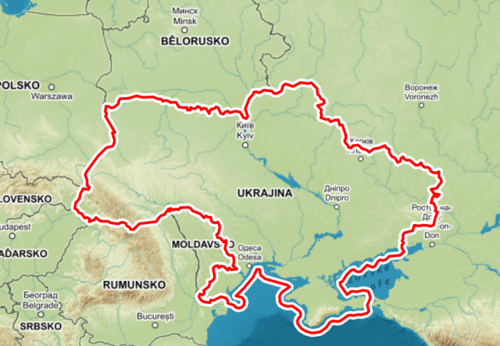
History of Ukraine
- short overview
What is actually Ukraine ? Already the name itself is problematic, ukrainna means borderland, border area. But the border between who? Between East and West? Between Catholic and orthodox religion? I think it's much more prosaic. It was simply a border area in the struggle of the great powers, which divided Ukraine among themselves according to the ratio of their own forces. They were Poland and Russia, among which the Ukrainians were still grinding. Between the most numerous peoples of the western and eastern Slavs and between Catholicism and Orthodoxy, where they sought in vain for a compromise in the so-called Greek-Catholic Church.
To their own state - if we do not count the episode of Kievan Rus, they actually reached it only in 1918. All the eastern Slavs had it hard. From the east they were pushed by the expanding Russians, from the south by the Tatars, and from the west by the Poles. The eastern Slavs are made up of four peoples - Russians, Ukrainians, White Russians and Red Russians, or so-called Rusyns. They never made it to their own state until the collapse of Soviet Union.
However, it was Kiev where the first state of the eastern Slavs was formed. Although supposedly under the leadership of the varjags, that is, the Swedish Vikings, but it was a Slavic state. And Christianity came here from Byzantium.
Endless plains, steppes, fields and occasionally forests. Unlike, for example, the Czech Republic, Ukraine has no natural border, and this has always changed rapidly in history after the wars. In Russia, there is an opinion that Ukraine is part of it and that it needs it.
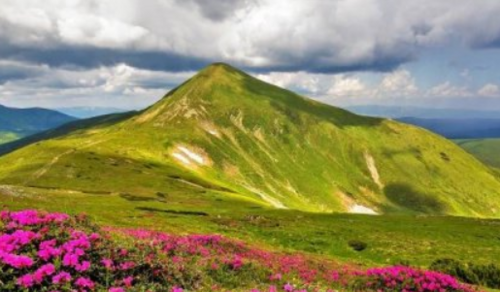 Hoverla mountain
Hoverla mountain
The settlement of present-day Ukraine is documented from 5. millennium BC, from which the finds of artifacts of the Tripolitan culture originate. In ancient times, the south of Ukraine was the periphery of the ancient world: there was a kingdom of the Scythians, whose life is reported by the Greek historian Herodotus in the Crimea and on the Black Sea coast, Greek and later goths colonies arose. Central and north-western Ukraine is then an area of ethnogenesis of the Slavs.
In the second half 9th century, the first East Slavic state, Kievan Rus, was formed in present-day Ukraine, Russia and Belarus, the most important of which was Vladimir I. He converted to Christianity in 988. After the disintegration of the state, several separate principalities were formed; in the west, the Galicia-Volyn principality was the most important, while the south of today's Ukraine was inhabited by nomadic tribes of the polovtsians.
During 13th century there was a gradual occupation of part of the separate principalities by Tatar (Mongolian) Raiders. The whole region came under the influence of the newly formed Tatar Golden Horde; only on the western part of today's Ukraine the Tatar power did not penetrate. The general part of Ukraine with the decline of the Golden Horde became a sovereign part of the Grand Duchy of Lithuania. In the south, the Crimean Khanate was formed, and the east came under the influence of Moscow Rus.
In 1569, the Lublin union was concluded; most of the Ukrainian territory, which fell under Lithuania (approximately along the Dnieper river), passed under Polish power. Significant was the settlement of Zaporozhye Cossacks with the center on the Sich. They created a kind of military buffer zone in the area of wild fields, adjacent to the Crimean Khanate. Crimean Tatars and nogais, vassals of the Ottoman sultan, made almost every year predatory incursions that prevented a more permanent settlement of southern and eastern Ukraine.
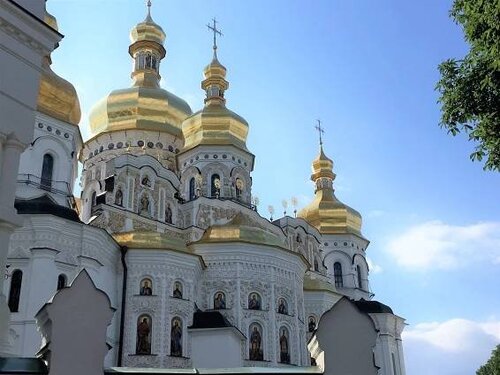 Kiev
Kiev
In 1648, there was a great Cossack uprising in Ukraine, led by Bohdan Khmelnitsky; (you can read my separte blog about this event
https://markethive.com/soleo/blog/ukrainecossackkhmelnytsky
Khmelnytsky managed to defeat Polish troops in several battles, only in 1651 he was defeated in the battle of Berestechek. In 1654, he turned for help to the Russian tsar Alexei, thereby falling into vassal dependence. Then the fighting continued. However, the Pereyaslav Rada meant the loss of sovereignty for Ukrainian territories. First, in 1667, most of the Left-Bank Ukraine was annexed to Russia (the country was then temporarily divided according to the Dnieper river), and during the division of Poland in 1793-1795, most of the right-bank Ukraine, except Halych and Bukovina, was acquired by the Habsburg monarchy. Gradually, Ukraine thus lost a hint of any autonomy. Late 18th century, the Tatar and Turkish power in the south was also liquidated. Empress Catherine II. The great and her mentor Prince Potemkin founded several important cities in the newly conquered so-called new Russia: among others, Odessa, Dnepropetrovsk, Simferopol and Sevastopol.
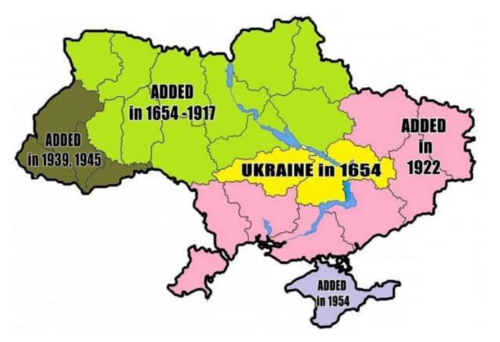
This map shows very well how went on the historical development of Ukrainian teritory until it became the second largest state in Europe after the European part of Russia.
At the time of the end of the first World War and during the Russian civil war, several Ukrainian governments were assembled on part of the Ukrainian territory. The first Ukrainian republic (UNR) existed in 1917-1919 and died out under the onslaught of the Russian Bolsheviks. The first Ukrainian president was the historian, writer and philosopher Mykhailo Hrushevsky. In addition to the Bolsheviks and the White guards, there were anarchists (Nestor Makhno), nationalists (Symon Petlyura) and Hetman Pavlo Skoropadsky. In the struggle for national independence, the Ukrainians were defeated: Western Ukraine in 1920-1921 became part of the 2. Republic of Poland and in 1922 the Ukrainian SSR was established as a republic of the Soviet Union with the capital in the eastern Ukrainian Kharkov, which was later transferred to Kiev. In 1926-40 there was an autonomous republic of Moldovans within the Ukrainian SSR.
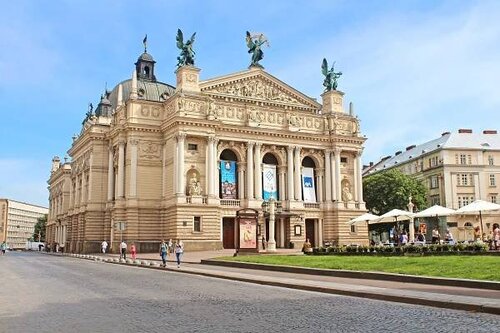 Lvov, National Academic theater
Lvov, National Academic theater
This is just basic overview from which is evident that the development on Ukraine territory during many centuries was not simple.
Independence of Ukraine was announced 24th August 1991.
Thanks for reading
Margaret
